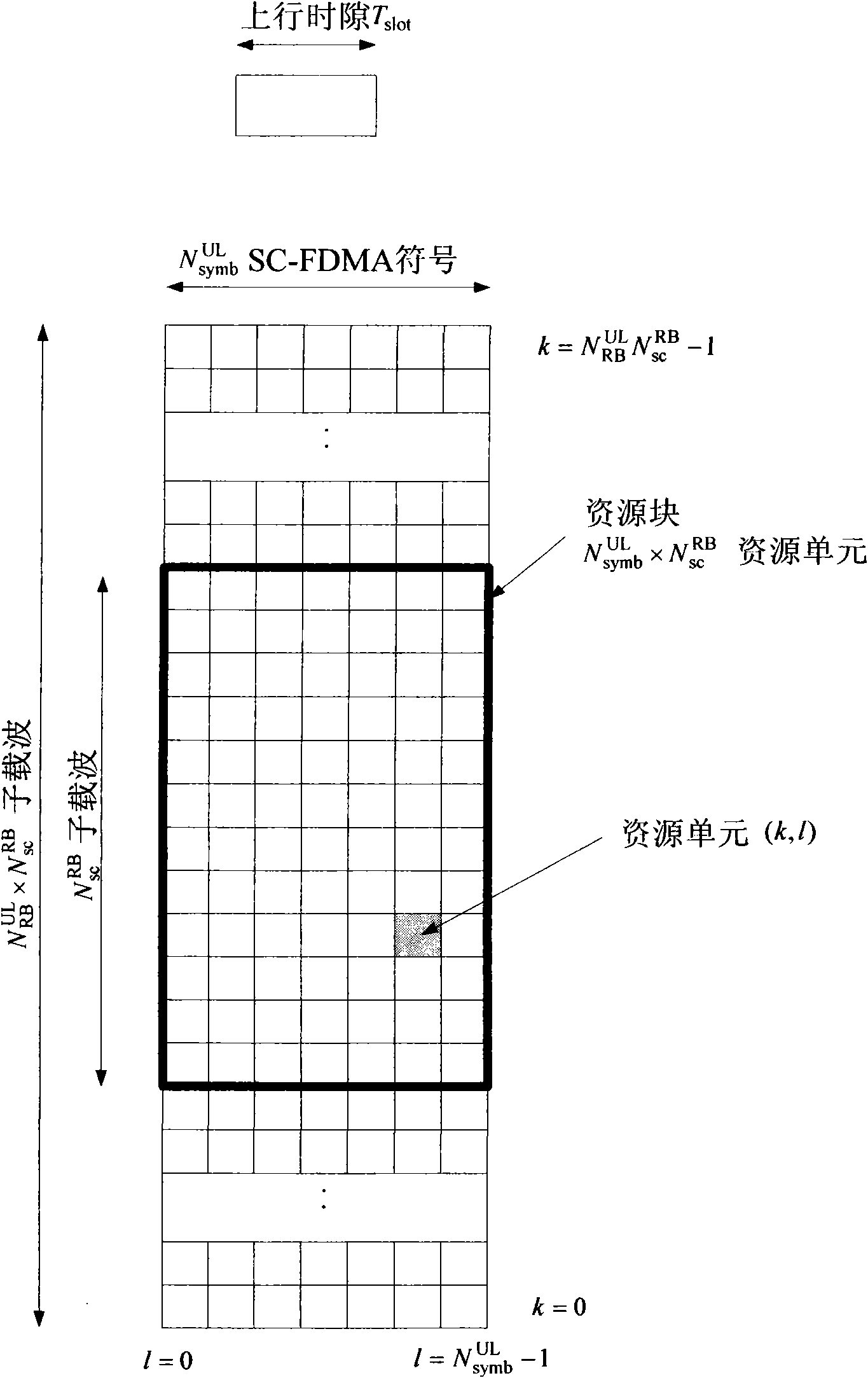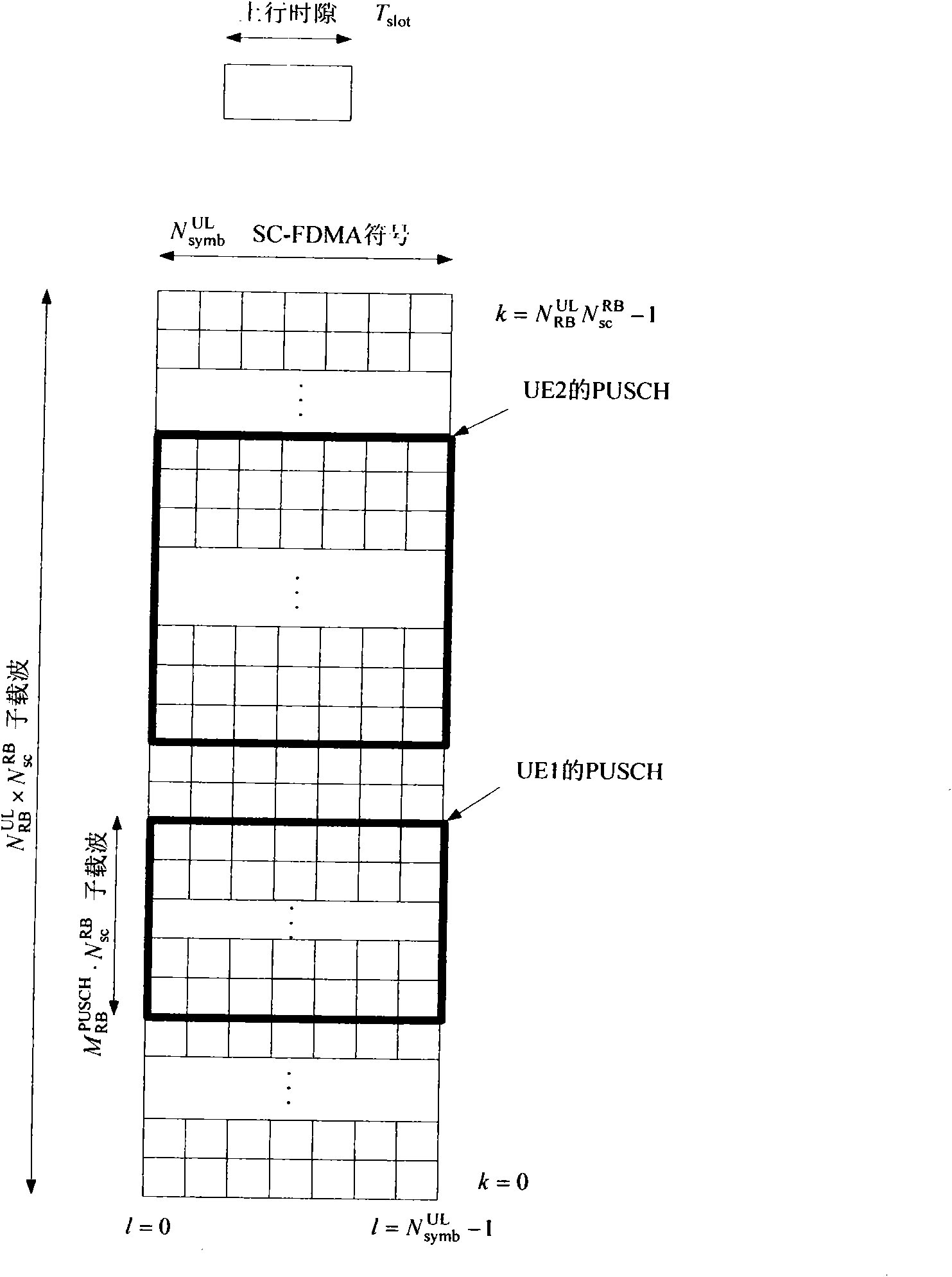Indicating method and base station, decoding method and terminal for wireless channel resource allocation
A resource allocation and wireless channel technology, applied in wireless communication, transmission path separation device, digital transmission system, etc., can solve the problems of not giving indication methods and decoding methods, etc.
- Summary
- Abstract
- Description
- Claims
- Application Information
AI Technical Summary
Problems solved by technology
Method used
Image
Examples
Embodiment 1
[0189] Assume that in the LTE-A system, the system bandwidth of a component carrier is 20MHz, and the corresponding number of PRBs is N RB UL = 100 ; In this component carrier, the number of PRBs corresponding to the bandwidth range used for PUSCH discontinuous resource allocation is N RB PUSCH = N RB UL = 100 ; The size of the resource block group is P=4, and the number of RBGs corresponding to the system bandwidth of the component carrier (that is, the bandwidth used for PUSCH discontinuous resource allocation) is
[0190]
[0191] and, because
[0192] N RB UL mod P = 100 mod 4 = 0
[0193] The size of...
Embodiment 2
[0197]Assume that in the LTE-A system, the system bandwidth of a component carrier is 15MHz, and the corresponding number of PRBs is N RB UL = 75 , In this component carrier, the number of PRBs corresponding to the bandwidth range used for PUSCH discontinuous resource allocation is N RB PUSCH = N RB UL = 75 ; The size of the resource block group is P=4, and the number of RBGs corresponding to the system bandwidth of the component carrier (that is, the bandwidth used for PUSCH discontinuous resource allocation) is
[0198]
[0199] and, because
[0200] N RB UL mod P = 75 mod 4 = 3 > 0 ...
Embodiment 3
[0206] Assume that in the LTE-A system, the system bandwidth of a component carrier is 10MHz, and the corresponding number of PRBs is N RB UL = 50 ; In this component carrier, the number of PRBs corresponding to the bandwidth range used for PUSCH discontinuous resource allocation is N RB PUSCH = N RB UL = 50 ; The size of the resource block group is P=3, and the number of RBGs corresponding to the system bandwidth of the component carrier (that is, the bandwidth used for PUSCH discontinuous resource allocation) is
[0207]
[0208] and, because
[0209] N RB UL mod P = 50 mod 3 = 2 > 0 ...
PUM
 Login to View More
Login to View More Abstract
Description
Claims
Application Information
 Login to View More
Login to View More - R&D
- Intellectual Property
- Life Sciences
- Materials
- Tech Scout
- Unparalleled Data Quality
- Higher Quality Content
- 60% Fewer Hallucinations
Browse by: Latest US Patents, China's latest patents, Technical Efficacy Thesaurus, Application Domain, Technology Topic, Popular Technical Reports.
© 2025 PatSnap. All rights reserved.Legal|Privacy policy|Modern Slavery Act Transparency Statement|Sitemap|About US| Contact US: help@patsnap.com



